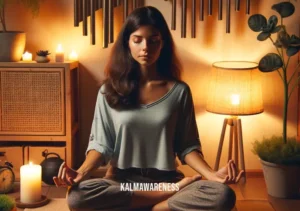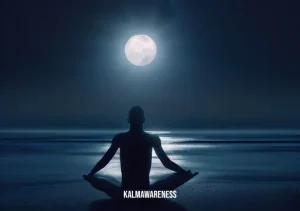V Shaped Yoga Pose: Find Balance and Strength
In the world of yoga, where tranquility meets movement, the V-Shaped Yoga Pose stands out as a symbol of balance and strength. As you embark on this journey of yoga exploration, you’ll discover the grace and power that this pose brings to your practice. In this first part of our article, we’ll introduce you to the V-Shaped Yoga Pose and lay the foundation for your practice.
Description and Explanation
Pose Name: V-Shaped Yoga Pose Original Name: Utthita Parshvasahita Vrksasana Difficulty Level: Intermediate Pose Category: Standing Balances Exercise Duration: Approximately 30 seconds to 1 minute
The V-Shaped Yoga Pose, also known as Utthita Parshvasahita Vrksasana, beautifully exemplifies the strength of a tree and the harmony of a dancer. This pose demands balance, focus, and a deep connection to your core. As you extend your legs and arms in opposite directions, you’ll create a graceful “V” shape that echoes the symmetry found in nature.
How to Practice the V Shaped Yoga Pose
For beginners, start by finding a sturdy support, such as a wall or a chair, that you can use to stabilize yourself as you become familiar with the pose. As you progress, you can transition to practicing without support.
- Begin in Mountain Pose (Tadasana). Stand tall with your feet together and your palms resting by your sides.
- Shift your weight onto your left foot. Engage your left leg muscles to create a strong foundation.
- Slowly lift your right leg off the ground, bending at the knee. Place the sole of your right foot against your inner left thigh. If balance is a challenge, use your hand to guide your foot to its resting position.
- With a firm foundation in your left leg, raise your arms overhead, extending them toward the ceiling. Your fingertips should be reaching for the sky.
- Find a focal point in front of you—a Drishti—to help maintain your balance. Keep your gaze fixed on this point throughout the pose.
- Engage your core muscles to stabilize your body. Imagine a straight line extending from your lifted foot through your spine and up to your extended fingertips.
- Embrace the stretch and elongation in your body. Breathe deeply, allowing your breath to flow smoothly.
For Beginners: Hold the pose for about 30 seconds on each side. Focus on maintaining your balance and stability.
For Advanced Practitioners: Aim to hold the pose for 1 minute or more on each side. As you grow more comfortable, you can explore variations by closing your eyes or gently swaying your lifted leg.
@
V Shaped Yoga Pose: Balance Within
Welcome to the second part of our exploration into the transformative world of the V-Shaped Yoga Pose. In this chapter, we delve deeper into the intricate balance that this pose brings to your practice. As you continue your journey, you’ll uncover the myriad benefits of the pose, understand its limitations, and explore variations that cater to practitioners of different experience levels.
Discovering the Benefits
The V-Shaped Yoga Pose isn’t just a beautiful stance; it offers a wide array of benefits that contribute to both your physical and mental well-being:
- Core Strength: As you extend your limbs in opposing directions, your core muscles engage to maintain stability. This process strengthens your abdominal muscles, enhancing your overall core strength.
- Balance and Focus: Achieving the V-shape requires unwavering focus and concentration. Regular practice of this pose cultivates mindfulness and improves your sense of balance.
- Spinal Alignment: The pose encourages proper alignment of the spine, which is essential for maintaining a healthy posture and preventing back issues.
- Leg and Hip Flexibility: Utthita Parshvasahita Vrksasana stretches the inner thighs, hamstrings, and groin, promoting flexibility and range of motion in these areas.
- Stress Relief: The meditative quality of this pose calms the mind and reduces stress. The focus on breath and balance creates a sense of tranquility.
Pose Suitability: Who Can and Cannot Practice
While the V-Shaped Yoga Pose offers numerous benefits, it’s important to understand its suitability for different individuals:
Who Can Do the Pose:
- Intermediate Practitioners: Individuals with a moderate level of yoga experience and balance can explore this pose.
Who Should Avoid the Pose:
- Beginners: If you’re new to yoga or struggle with balance, it’s advisable to master foundational poses before attempting the V-Shaped Pose.
- Injury or Health Conditions: If you have ankle, knee, or hip injuries, or any medical conditions that affect balance, consult a healthcare professional before practicing this pose.
Variations for Different Levels
The beauty of yoga lies in its adaptability. The V-Shaped Yoga Pose offers variations that cater to different levels of experience:
Beginner Variation:
- Wall Support: Practice the pose with your back against a wall for added stability. This allows you to focus on your balance without the fear of falling.
Intermediate Variation:
- Tree Pose: As you lift your leg, rest the sole against your calf instead of your inner thigh. This modification maintains balance while engaging your core.
Advanced Variation:
- Hands-Free: Challenge your balance by extending your arms outward or placing your hands in prayer position at your heart center.
@
V Shaped Yoga Pose: Symbolism and Roots
As we journey deeper into the realm of the V-Shaped Yoga Pose, we now embark on a chapter that uncovers the historical tapestry that weaves this pose into the rich heritage of yoga. In this part, we delve into the pose’s historical origins, explore its spiritual significance, and provide you with invaluable insights to enhance your practice.
Tracing the Historical Threads
The History of the Pose: The V-Shaped Yoga Pose, like many yoga postures, finds its roots in ancient yogic texts and practices. Its origins can be traced back to the classical texts such as the Yoga Sutras of Patanjali and the Hatha Yoga Pradipika. These texts lay the groundwork for postures that enhance balance, strength, and harmony.
Unveiling the Spiritual Significance
The Spiritual Aspect: Beyond the physical benefits, the V-Shaped Yoga Pose holds a deeper spiritual symbolism. The extended arms and legs form a shape reminiscent of a tree, symbolizing a connection to the earth, the heavens, and everything in between. This pose encapsulates the essence of balance—balancing the material and the spiritual, the inner and the outer.
Tips for a Fulfilling Practice
Getting the Most Out of the Pose: To enhance your experience of the V-Shaped Yoga Pose, consider these tips:
- Breathe Mindfully: Focus on your breath as you hold the pose. Inhale deeply, allowing your lungs to expand, and exhale fully to release tension.
- Engage Your Core: Activate your core muscles to maintain stability and a straight posture throughout the pose.
- Maintain Focus: Keep your gaze fixed on a single point (Drishti) to enhance your balance and concentration.
Navigating Common Mistakes
Mistakes to Avoid: While practicing the V-Shaped Yoga Pose, be mindful of these common errors:
- Overarching the Back: Avoid excessive arching of your lower back. Engage your core to maintain a neutral spine.
- Tensing the Shoulders: Keep your shoulders relaxed and away from your ears. Focus on creating space and openness in the chest.
Modifications for All Practitioners
Adaptations for Injuries or Limited Flexibility:
- Chair Variation: If you have knee or ankle injuries, practice the pose using a sturdy chair for support. Lift your leg and extend your arms just as you would in the standing variation.
- Wall Support: If balance is a challenge, practice the pose against a wall. This modification allows you to focus on alignment without the fear of falling.
Complementary Poses
Enhancing Your Practice: The V-Shaped Yoga Pose can be beautifully complemented by these postures:
- Tree Pose (Vrksasana): This standing balance pose further strengthens your legs and enhances your focus.
- Warrior III (Virabhadrasana III): Warrior III engages your core, enhances balance, and builds strength in the legs.




![morning manifestation meditation _ Image: [Visual: The person standing tall, surrounded by a bright morning glow and a vibrant cityscape.]Image description: Emerging from their meditation, the person stands confidently, now aligned with their aspirations. The morning sunlight mirrors the newfound radiance within them, and the cityscape beyond hints at limitless possibilities.](https://kalmawareness.com/wp-content/uploads/2023/09/112_5-300x211.webp)